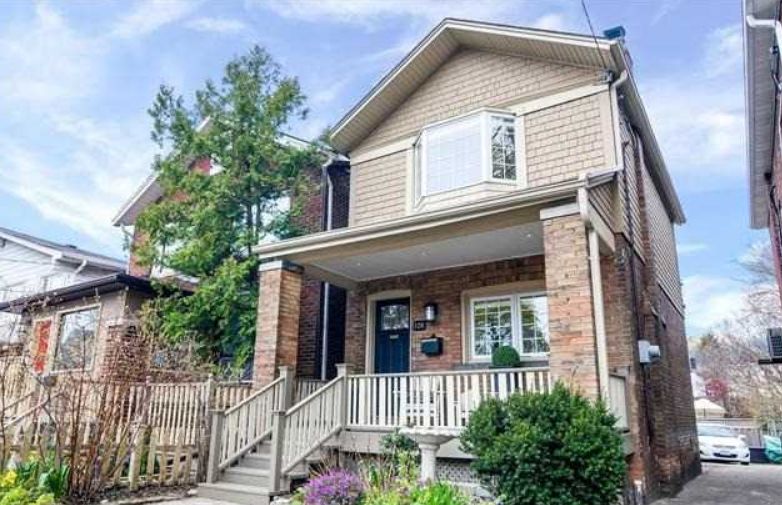“There was a bubble in the housing market. Speculative buying was rampant, especially in York Region, and York Region is the area that is getting hit the hardest,” he said.
Real estate sales that now appear so disastrous compared to 2017 and 2016 are actually just returning to normal.
“It’s just the market moving back to where it should have been had all this speculation not happened,” said Pasalis, who thinks sales could end up somewhere back at pre-2015 levels this year in 2018.
The provincial policies and the mortgage stress test are causing buyers to sit back and take a breath, said David Amborski, chair of Ryerson’s Centre for Urban Research and Land Development. But he expects sales to return to a normally busy spring level.
“It’s not going to go back to the old boom, but it’s going to normalize — level out,” he said.
The economic fundamentals, including “incredible job growth in 2017,” along with the huge influx of population into the GTA — plus household income growth “that has been kind of nascent since the recession” of 2008-09 — mean that the Toronto market will lift, Peter Norman, chief economist with Altus Group, said.
“Job growth pushes kids out of their parents’ basements and (1) it encourages existing renters to move to home ownership and (2) it encourages existing owners to move up the ladder as well. That’s the key piece and often with a bit of a lag,” said Norman, who expects interest rates to stabilize this year and prices to rise by 5 per cent by the end of 2018.
“At times when we’ve had a terrible real estate market in the city — 1991 to 1995 for example; in a brief way in 2009 — it has always been related to external economic shock. It’s the economics that really drive the market, it’s not the financial conditions. The financial conditions just make people re-adjust how and where they buy,” he said.
The current decline in sales could, in the end, actually improve affordability, if falling sales moderate prices, said Sheila Block, senior economist with the Canadian Centre for Policy Alternatives.
“If you believe we have been in a speculative bubble, bursting those bubbles is never smooth,” she said.
So far, none of the housing or financial policies have done anything to improve affordability. But if governments — federal, provincial and municipal — took a more co-ordinated approach to addressing affordable housing needs, that could ultimately ripple up the line to the middle-income supply, she said.
Given the region’s affordability challenge, it’s possible that more middle-income households will need to reconsider home ownership, as costs here are relatively high. “Affordable stable rental supply might be something that regular, middle-class people need to look at,” she said.
“Yes, prices have started to slow down but it’s coming off an unsustainable peak,” Dana Senagama, an analyst with Canada Mortgage and Housing Corporation (CMHC) said.
The current cooling, such as the 4.4 per cent year-over-year decline that the Toronto Real Estate Board reported in January, 2018, also has not solved the problem of over-valuation that CMHC has flagged in the Toronto area. “The fundamental flaws are still there,” said Senagama, who admits that it’s not clear that the basic supply-and-demand issue is solvable as a prosperous region continues to attract immigrants and workers.
Density — packing more people into less space — is one answer to the affordability issue, but even there, the high-density high-rise housing supply mostly made up of condos is getting tighter, driving up prices, she noted.
“One way to counteract that is to have more rental supply,” said Senagama. But while there are signs of renewal on the purpose-built rental side, there’s a trend to luxury rental. And even then, the level of supply does not approach that of new condos.
Moving to more mid-rise and wood-frame construction could help bring down the price of building rental, she said.
In some ways, the housing supply problem is a by-product of the Toronto region’s success, said Senagama.
“This is something that’s not unique to us,” she said, citing cities such as New York, London and Tokyo.
“We know what is creating these pressures. Any city that tends to receive a lot of people and that is growing, these are problems.”
Source: Toronto Star
Thinking to sell your house or Condo in Central Toronto areas and/or in downtown Toronto areas? Please call, text or email Max Seal, Broker at 647-294-1177. Please visit http://www.TorontoHomesMax.com for a FREE Home Evaluation“.
Thinking to buy a House or Condo in Central Toronto areas and/or in Downtown Toronto areas? please call or text Max Seal, Broker at 647-294-1177 to buy your dream home or Condo. I offer you a 30-min “FREE buyer’s consultation” with NO obligation.
Please visit my website http://www.centraltorontorealestate.com/ to find out available homes and Condos for sale in Central Toronto areas and/or in downtown Toronto areas.
This Toronto housing market may be a better time for “Move-up”, “Move-down” or “Empty-nester” Sellers and Buyers. Want a “Market Update” of your home in 2018? Please click the image below or call or text Max Seal, Broker at 647-294-1177 or send an email.


Leave a Reply